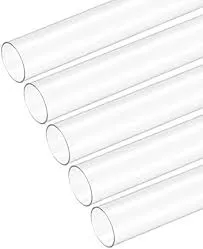Σεπ . 28, 2024 23:10 Back to list
Understanding the Density Characteristics of HDPE Sheets for Various Applications
Understanding HDPE Sheet Density Properties and Applications
High-Density Polyethylene (HDPE) is one of the most widely used plastics in various industries due to its remarkable strength, durability, and resistance to impact and chemicals. Among its many characteristics, density plays a crucial role in determining the material's suitability for specific applications. This article aims to explore the density of HDPE sheets, its implications, and the broad spectrum of applications it supports.
What is HDPE?
HDPE is a thermoplastic made from petroleum. It is characterized by a high strength-to-density ratio and is known for its low moisture absorption, high tensile strength, and toughness. The production of HDPE involves polymerizing ethylene at high pressure and temperature, resulting in a dense, crystalline structure.
The Density of HDPE Sheets
The density of HDPE typically ranges from 0.93 to 0.97 g/cm³. This relatively high density compared to other plastics contributes to its overall strength and rigidity. The density can be affected by factors such as the manufacturing process, the presence of additives, and the specific molecular weight of the polymer used.
Understanding the density of HDPE sheets is essential for manufacturers and engineers as it directly influences the material's mechanical properties, such as its tensile strength, impact resistance, and thermal expansion.
Implications of Density in HDPE Sheets
1. Mechanical Properties The high-density of HDPE correlates with enhanced mechanical properties. A denser material can withstand higher loads and impacts, making it ideal for applications where strength is critical.
2. Chemical Resistance HDPE's dense structure contributes to its exceptional resistance to chemicals. This characteristic makes HDPE sheets suitable for use in environments where exposure to corrosive substances is common.
3. Material Fabrication The density of HDPE sheets impacts their machinability and fabrication options. While HDPE sheets are relatively easy to cut and shape, those with higher density may require specialized tools to ensure precision during the manufacturing process.
hdpe sheet density

Applications of HDPE Sheets
The versatility of HDPE sheets arises from their density and other inherent properties, allowing them to be used across various industries, including
- Packaging Due to its strength and resistance to moisture, HDPE is commonly used in packaging applications ranging from containers to bottles.
- Construction HDPE sheets are used in construction for applications like vapor barriers and as insulation in buildings due to their moisture resistance and durability.
- Automotive The automotive industry utilizes HDPE for various components, including fuel tanks and interior panels, where weight savings and durability are essential.
- Transportation HDPE sheets are used in the construction of pallets and containers, providing durability while reducing weight, crucial for shipping logistics.
- Agriculture In agriculture, HDPE sheets serve as liners for ponds, landfills, and storage tanks, leveraging their chemical resistance and durability.
- Medical Devices The non-toxicity of HDPE makes it a preferred choice for manufacturing medical devices, including syringes and various medical packaging.
Conclusion
HDPE sheets, with their advantageous density and a wide array of properties, play a crucial role in numerous applications across diverse industries. Understanding the implications of HDPE density allows manufacturers to select the appropriate material for their specific needs, ensuring product reliability and performance. As industries continue to innovate, the importance of HDPE and its various formulations is likely to grow, reinforcing its position as a material of choice in modern manufacturing. Whether in construction, packaging, or any other field, the understanding of HDPE properties, especially density, is indispensable for advancements and sustainability in material usage.
-
High-Quality PPR Pipes and Fittings Durable ERA PPR & PVC PPR Solutions
NewsJul.08,2025
-
Black HDPE Cutting Board - Durable, Non-Porous & Food Safe HDPE Plastic Cutting Board
NewsJul.08,2025
-
High-Quality CPVC Panel Durable HDPE & PVC Panels Supplier
NewsJul.08,2025
-
Double PE Welding Rod Supplier - High Strength, Durable & Versatile Welding Solutions
NewsJul.07,2025
-
High-Quality PVC-O Pipe Supplier Durable 75mm PVC Pipe & Connections Leading PVC Pipe Company
NewsJul.07,2025
-
HDPE Drainage Pipe Supplier – Durable & Corrosion-Resistant Solutions
NewsJul.06,2025

